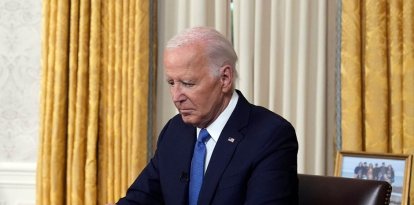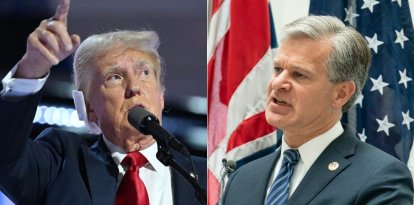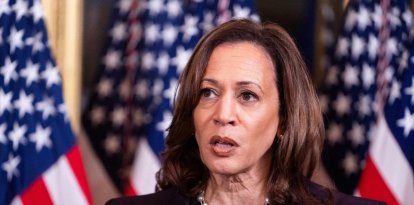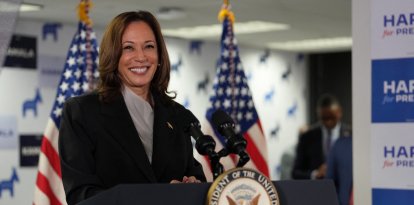From defective planes to derailing trains and collapsing bridges: The global and severe transportation and infrastructure crisis in the US
The country is falling behind in multiple areas, including maritime territory, where China's shipyard manufacturing dominance is growing exponentially.

(Wikimedia Commons)
Over the last few months, Boeing has achieved the unimaginable. The company has undergone a staggering decline in its public reputation following the tragic plane accidents of 2018 and 2019. This decline is not only due to these unfortunate and strange incidents involving its aircraft but also to internal complaints revealing safety negligence in the manufacturing process of the 787 Dreamliner models.
This situation represents a significant new crisis in the U.S. transportation sector. An industry that was once considered safer, more reliable and highly regarded is now facing a profound crisis, amid criminal and federal investigations. Discussions about Boeing on Capitol Hill, the media and airports worldwide are overwhelmingly negative. Additionally, Boeing is grappling with severe economic challenges, carrying a debt load of $52.3 billion despite a recent 20% increase in income in 2023, marking its first recovery after four years of losses.
Amid this severe public relations crisis, Boeing Chairman and CEO Dave Calhoun announced in March his decision to step down as CEO at the end of 2024.
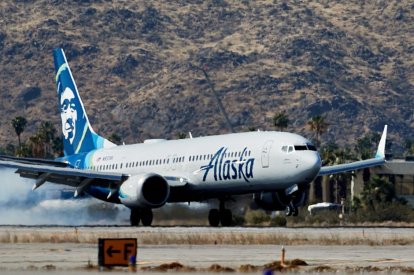
An Alaska Airlines Boeing plane.
However, the Boeing crisis is not an isolated incident. Two weeks ago, the Francis Scott Key Bridge collapsed after being struck by the large container ship “DALI." This tragedy resulted in the death of six people, significant infrastructure damage and sparked an economic and logistical crisis at the port of Baltimore.
According to the Financial Times, the weekly direct economic impact of the partial closure of the Port of Baltimore amounts to approximately $1.7 billion. Moreover, the indirect impacts stemming from disruptions to the supply chain could be even more substantial, raising concerns about potential inflationary effects following the accident.
The Wall Street Journal reported there are more than eight bridges in the country that are vulnerable to similar incidents as the Francis Scott Key accident. These bridges include the Tacoma Narrows Bridge in Washington, the Lewis and Clark Bridge connecting Oregon and Washington, the St. Johns Bridge in Oregon, the San Francisco-Oakland Bay Bridge in California, the Golden Gate Bridge in California, the George Washington Bridge linking New Jersey and New York, the Verrazzano-Narrows Bridge in New York and the Chesapeake Bay Bridge in Maryland.
According to the WSJ, these bridges, many of which are older than the Francis Scott Key, share similar characteristics in terms of their tension steel components that, if compromised, could lead to collapses like the one witnessed in Baltimore. Consequently, these bridge designs require specialized evaluations almost annually to ensure not only their safety but also to assess if sustainable improvements are needed to meet evolving safety standards and prevent catastrophes like the one in Baltimore.
Now, how does the Boeing crisis in transportation relate to the infrastructure accident in Baltimore and why is this connection critical for the United States? It's more significant than one might initially think.
Transportation and supply chains are intrinsically interconnected. Consider how raw materials are taken from one place to another, whether by trucks, trains, ships or planes. All of these modes are essential for this process. However, the United States is grappling with deficiencies, detrimental delays and even infrastructure collapses, contributing to a severe global crisis that cannot be resolved solely through increased spending, despite President Joe Biden's pledge upon signing the “historic” $1.2 trillion infrastructure spending law.
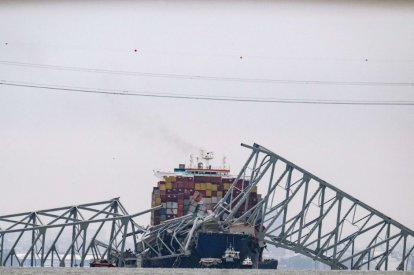
The collapsed Francis Scott Key Bridge sits atop the container ship Dali in Baltimore
The White House's much-celebrated political milestone has failed to address the underlying issues that have led the United States into a global transportation and infrastructure crisis with diverse causes but a common origin.
Critics argue that the funds from this multimillion-dollar law are primarily directed toward road projects that continue to promote car usage, contradicting a key objective of the law- to enhance urban public transportation.
Despite being a global powerhouse, the United States suffers from severely deficient urban transportation systems, contributing significantly to the massive traffic congestion in major cities.
This is a problem that not only impacts the quality of life for Americans but also results in substantial economic losses. Cities such as Chicago, Los Angeles and New York have faced billions of dollars in economic losses annually.
According to Forbes, “INRIX estimates that in the United States at least, drivers lost more than $88 billion due to tailbacks in 2019 with the average cost for each of them coming to $1,377. New York had the highest economic losses out of any major U.S. city with congestion costing it $11 billion last year. Los Angeles lost $8.2 billion while Chicago suffered the third-worst impact at $7.6 billion. When it comes to hours lost in traffic, Boston actually had the highest total at 149 per year, ahead of Chicago's 145 and Philadelphia's 142."
Why does the U.S. face public transportation challenges? It is a long-standing issue stemming from negative federal government incentives and a lack of coordination and planning among states. Historically, state agencies have overlooked transportation investment, leading to the shocking statistic that 45% of Americans lack access to public transportation, according to the American Society of Civil Engineers (ASCE).
However, these critical infrastructure and transportation problems extend beyond these issues.
According to the Financial Times, the United States is grappling with multiple crises, including the closure of the port of Baltimore, Boeing's decline, the lagging maritime fleet compared to China, stagnation in electric vehicle manufacturing, inadequate overland train travel, and the post-pandemic decline in the safety and reliability of urban transportation systems.
According to the newspaper, these issues, though often discussed, are interconnected in the complex transportation and logistics landscape.
For example, consider the outdated railway industry in the U.S. This became evident in February 2023, when the Norfolk Southern train derailed while carrying toxic cargo in East Palestine, Ohio. This accident resulted in $387 million of losses for the company and had lasting impacts on East Palestine that affected local residents for months.
Not everyone remembers that, just weeks after that derailment, another train from the same company derailed in White Plains, Alabama. This incident received less national attention as it involved non-toxic merchandise.
Were those the only two accidents? Of course not. That same month, the company dealt with three other derailments.
In 2022 alone, there were more than 1,000 train derailments in the United States, averaging three train derailments per day, according to data from the Federal Railroad Administration. This trend continued in 2023, with 1,164 reported derailments. Overall, 8% of all cities in the U.S. have had at least one derailment since 2013.
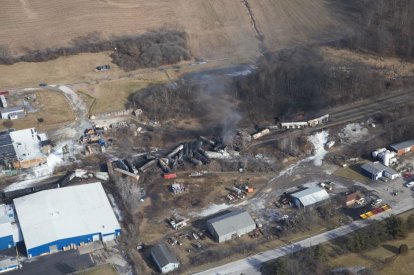
East Palestine, Ohio accident on February 3, 2023. A freight train carrying chemical components operated by Norfolk Southern derailed in the town. Tons of toxic material were released, causing the city to be evacuated. Archive image.
While most of these derailments were not natural disasters like the accident in East Palestine, it is clear that the country still has a long way to go in ensuring railway safety. Despite official claims of significant decreases in train accidents since 2000, critics argue that the industry has been neglected for decades, overshadowed by the advancements in air travel and automobiles.
In 2021, writer Thor Hogan wrote an article for The Washington Post explaining why the gap in the railroad industry in the United States is a significant hindrance when competing with China, a nation rapidly developing its infrastructure across all sectors.
According to Hogan, a century ago the United States had the largest and most powerful passenger rail network in the world. This transportation system served as a key driver of economic growth through a successful public-private partnership, although imperfect.
“Then, through egregious governmental missteps, the system atrophied to become a shadow of its former self,” Hogan wrote. “This decline matters. The Japanese and Europeans built world-class high-speed rail networks in the late 20th century, which helped make their companies more efficient and fostered tourism. More recently, the Chinese have contrasted their newly built rail system with the United States’ crumbling passenger service to bolster China’s claim to be on the cutting edge technologically. China contends it’s now the model to emulate and the world power with which to partner.”
Hogan's insights were echoed in the Financial Times, which simplifies the comparison: what happened in the railway industry also played out in the maritime sector, and other areas as well.
In addition to reflecting on the U.S. railway sector, the maritime realm presents another stark comparison. China has significant advantages and is in a completely different league.
Once the world leader in the railway sector, American shipyards dominated in 1975, producing over 70 commercial ships annually. However, today, due to manufacturing challenges, the United States has slipped to 19th place globally, trailing behind major powers like China, France, and Japan, as well as seemingly less prominent countries like Vietnam.
Some critics attribute this decline to protectionism, notably the Jones Act which restricts the movement of foreign ships in American waters. However, analysts argue that this century-old regulation is not the primary reason why China excels in shipyard and warship manufacturing.
Despite defenders of the Jones Act arguing for its importance in safeguarding America's naval interests, there is a consensus that the country urgently needs to expand its shipbuilding capacity and enhance its naval fleet in response to China's formidable capabilities.
In an editor's letter sent to The Wall Street Journal, Senator Roger Grabow (R-MS) wrote: “This is not a time to stress-test this historical truth. China put 30 warships to sea last year, and it boasts the world’s most merchant vessels. Meanwhile, the U.S. naval fleet shrank, and we now rank 70th in commercial shipping inventory. Repealing the Jones Act would narrow the already shrinking margin of American naval superiority."
The stark facts highlight a decades-long trend of the United States conceding to China across multiple strategic sectors. This pivotal moment demands that business leaders and public policymakers heed the signals from the different transportation and infrastructure crises facing the United States. This is the only way we can formulate a coherent strategy to reclaim our top position.













